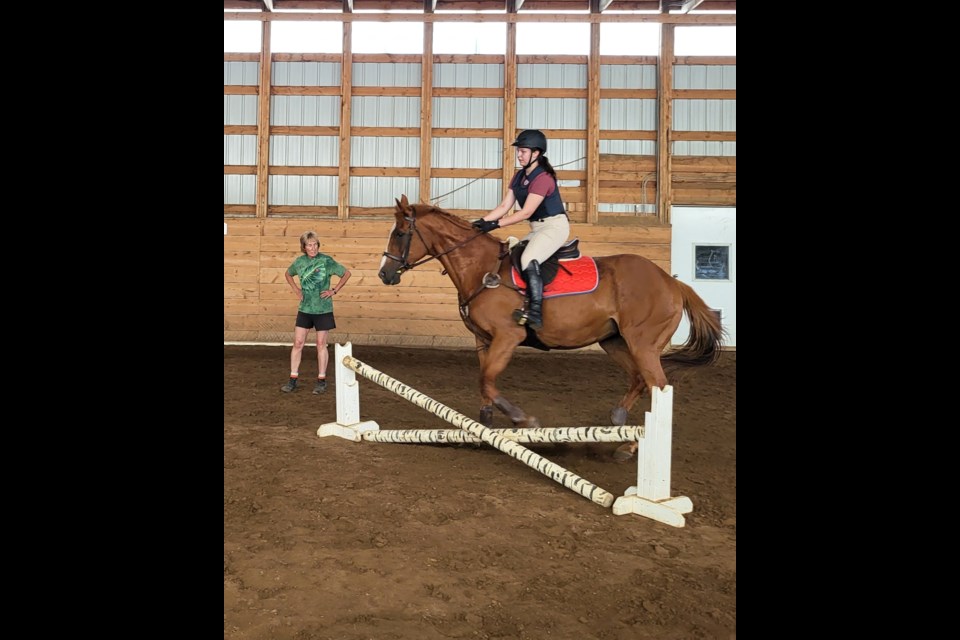Barrhead County’s Noreen Pinder coached three groups of youth to a horse jumping camp the week of July 8 to July 12.
“Overall, it has been an amazing and positive experience for our students,” summarized Abby Wilson, Northwest Territories co-organizer.
“When a student or a rider comes to learn we work on body position before they even think about jumping,” said Pinder.
“Once they have achieved that we move on to move technical things.”
Riders from the Northwest Territories were part of the group attending the camp. Many of these riders have not been able to ride horses since being evacuated because of devastating fires.
Abbey Wilson and Katarina Walsh organized seven girls to come to the camp.
Wilson has attended the camp and learned from Pinder last year.
“Noreen took me under her wing, and we have been working together ever since,” explained Wilson, who is pursuing a coaching certificate.
The North Country Stables in Yellowknife still has no horses a year after the evacuations, where fires burned out of control, but did not reach the facility.
Horse jumping requires technical accuracy in the rider, from how they position their body on the horse, how they move in the saddle, and how they work the reins.
“What position they should be in coming up to a jump, the position they should be in going over a jump and what position when landing, are important,” remarked Pinder.
She explained that riders lean forward as they approach a jump which can put a horse and rider off balance.
This can jeopardize the safety of both horse and rider.
The camp includes riders who compete, and others are recreational riders which are paired together to enable the recreational riders to learn what is required in competition.
Each of the girls gets a chance to bond with a school horse during the camp and practice their jumping with that particular horse.
During the practice sessions each girl comes up to the jump differently and all of the riders pay attention to the feedback given by Pinder at each attempt at a jump.
There are micro-moments that can cause problems with a jump and feedback is crucial to the riders.
Parents and grandparents are spectators to the training sessions.
Many of them taking videos of the practice rides. Pinder commented that the videos are valuable to the riders so they can see when they are leaning or looking down which can cause problems with a jump.
Looking down at the jump on approach causes a rider to roll their shoulders forward and can’t get a good position to take off, according to Pinder.
In the past there have been both boys and girls at the camps.
The camp has been running for the past 18 years, started in 2004 and had to shut down for two years because of COVID.
Each camp held has had between 12 and 18 students of varying abilities and riding experience.
The camp runs for 5 days and then the attendees go to a horse show where some of the riders compete, and some riders go to observe.
“They have been learning so much from Noreen and her students. It not only about the riding. It’s about the horse care, barn management and rider care.”
Wilson added that the camp brought awareness to the students and broadened their knowledge of what is possible in riding.
“It warms my heart that the students are riding again.”



